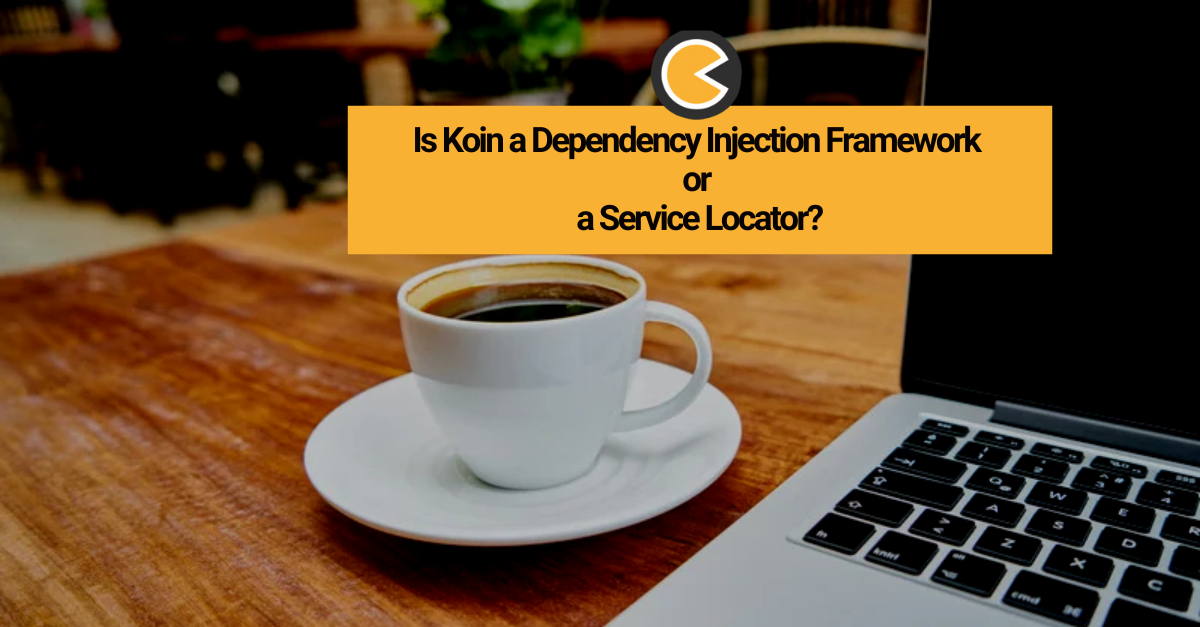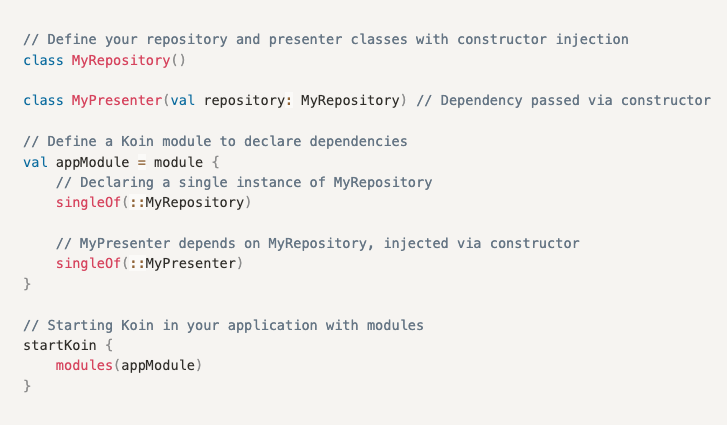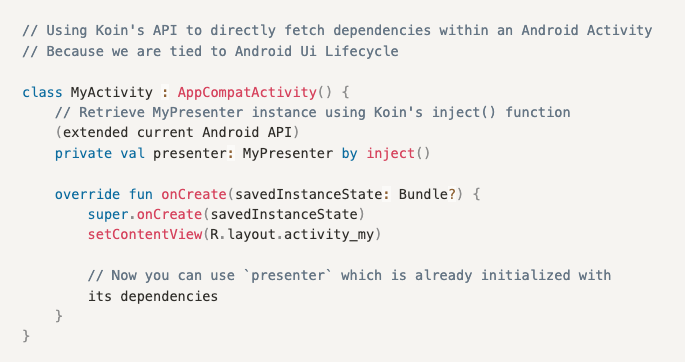In the realm of Kotlin-based web development, Ktor has emerged as a powerhouse framework for...
Is Koin a Dependency Injection Framework or a Service Locator?

There’s a persistent question in the Android development ecosystem about whether Koin is a service locator or a DI framework.
The short and simple answer is Koin is a dependency injection (DI) framework for Kotlin, offering a modern and lightweight solution for managing your application’s dependencies with minimal boilerplate code. Koin also supports the Service Locator pattern.


Ok, so now that you know, let's discuss this a little further for context.
What is a Service Locator Pattern?
The Service Locator Pattern is a design pattern used to manage object dependencies by providing a centralized registry, or "locator," from which objects or services can be fetched as needed. Instead of injecting dependencies directly into a class, the class retrieves them from the service locator, creating a form of indirect dependency management.
In Kotlin, this pattern is sometimes implemented using a singleton object or a class that stores and provides access to various services or objects. While this approach can simplify the retrieval of dependencies, it often leads to tightly coupled code and can obscure the relationships between objects, making testing and maintainability more challenging.
Also without compile-time checks, the service locator pattern can lead to those frustrating runtime errors that only show up when you're actually running the application. This can make it trickier to scale and maintain because you could be left dealing with issues that could have been caught earlier in the development process, adding extra layers of debugging and potential headaches down the road.
What Makes a Dependency Injection Framework Different?
Dependency Injection (DI) frameworks are designed to inject dependencies at object creation, managing them externally and promoting loose coupling, testability, and maintainability.
At its core, DI is all about pushing the responsibility of managing object dependencies out of your classes and into a separate framework. Instead of a class creating its own dependencies, a DI framework (like Koin or Dagger) injects those dependencies when and where they’re needed.
Why is this important? Well, for starters, it keeps your code loosely coupled, meaning classes don’t need to know the nitty-gritty details of how their dependencies are created. This not only makes your code more modular but also way easier to test—just swap in mocks or fakes for testing without rewriting your whole setup.
The real beauty of DI is that it promotes a clear separation of concerns, leading to more maintainable, scalable code in the long run. Plus, when done right, it reduces those annoying runtime surprises, making your development life a little smoother.
Koin: A Flexible, Developer-Friendly Approach to Dependency Management
Koin is a Dependency Injection (DI) Framework that supports the Service Locator pattern, with a strong endorsement for constructor injection. This method, where dependencies are explicitly supplied via constructor parameters, not only boosts testability but also enhances the clarity of your codebase, making it easier to follow and maintain.
Design Philosophy: Simplicity with Capability At its core, Koin is designed to marry simplicity with the capability to handle complex configurations as needed. This makes Koin not only easy to set up but also robust enough to manage intricate dependency structures effectively.
While DI is the preferred method for straightforward dependency management and promoting code health, Koin adapts to the Android platform's unique demands. The UI lifecycle on Android necessitates hooking into this lifecycle, occasionally requiring a form of the Service Locator pattern to effectively manage UI-related dependencies.
Koin accommodates these platform-specific requirements, providing a balanced, pragmatic approach to software architecture.
Exploring Koin’s Operational Mechanics
Koin inherently provides a globally accessible component that functions akin to a service locator, allowing you to fetch dependencies centrally through the KoinComponent interface or inject functions.
While the encouragement is towards using DI, particularly constructor injection for its clarity and testability benefits, Koin’s flexible design allows isolated use of Service Locator patterns where it fits best, ensuring that your application remains both scalable and maintainable.
Within Android development, Koin simplifies setup by utilizing the Service Locator pattern internally in components like Application and Activity. From there, Koin promotes DI, especially constructor injection, for a more organized and testable codebase. This flexibility ensures that you can opt for Service Locator methods when necessary, without compromising on the structural benefits of DI.
Koin's integration feels as intuitive and ready-to-use as natural Android APIs, akin to Google’s advocacy with mechanisms like the by viewModels() function, making life easier by providing familiar and easy-to-integrate solutions.
Why This Matters
We need to understand the nuances between DI and Service Locator pattern to effectively manage dependencies in our applications. While DI is recommended for its benefits in enhancing testability and simplifying maintenance, Koin’s support for Service Locator provides a convenient fallback for specific scenarios, ensuring you can maintain loose coupling and high code quality.
How to Best Use Koin
-
Adhere to Best Practices: Embrace constructor injection wherever feasible to uphold high standards in dependency management, aligning with best practices that enhance both testability and maintainability.
-
Capitalize on Koin’s Versatility: Use Koin’s capabilities to utilize the Service Locator pattern where it simplifies setup, but predominantly rely on DI for critical application dependencies to ensure robustness.
-
Explore and Learn: Regularly consult the Koin documentation and hands-on examples to master setting up and using DI and SL effectively, tailoring your approach to fit your project’s specific needs.
-
Visual Aids: Use diagrams and practical examples to visualize how Koin manages dependencies across various scenarios, aiding in a deeper understanding and more effective application of this powerful DI framework.
We hope this exploration into Koin’s flexibility helps put the great DI vs. SL debate to rest—or at least sends it on a nice long vacation!
Happy coding!



